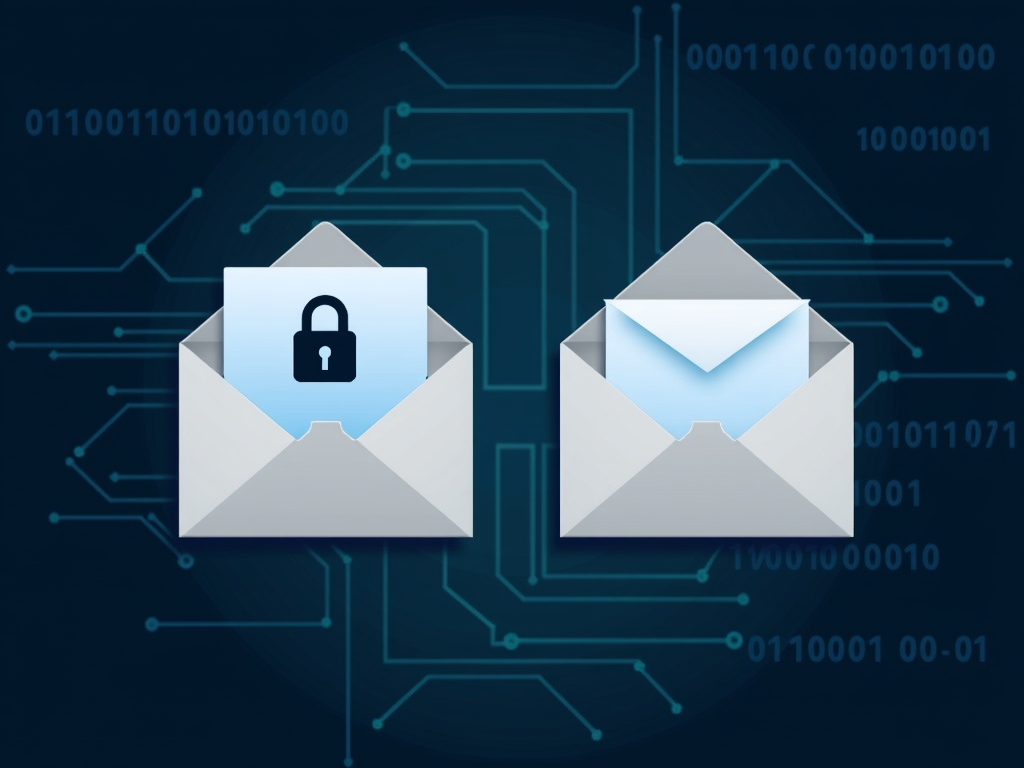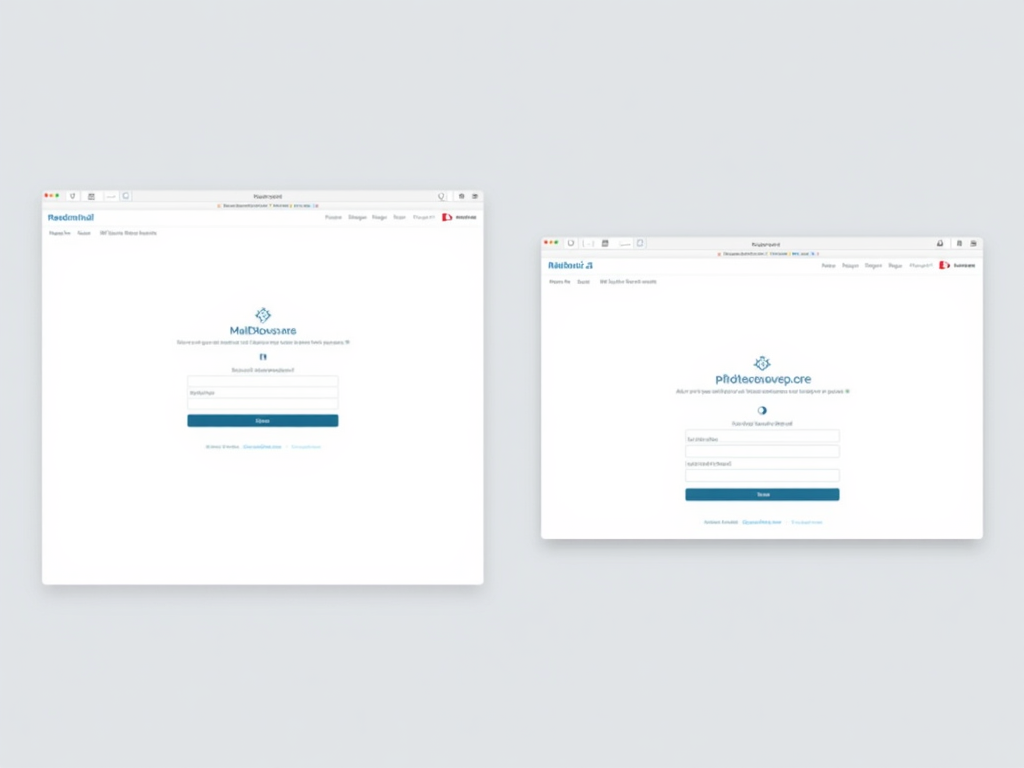How to Secure Your Email in 5 Easy Steps
In today's digital age, email security is more important than ever. With cyber threats on the rise, protecting your email account is crucial to safeguarding your personal information and maintaining your online privacy. This article will guide you through five easy steps to secure your email, ensuring that your communications remain private and secure.

Step 1: Use a Strong, Unique Password
The first and most fundamental step in securing your email is to use a strong, unique password. A strong password is one that is difficult for others to guess or crack using automated tools. It should be at least 12 characters long and include a mix of uppercase and lowercase letters, numbers, and special characters.
Personally, I use a password manager to generate and store my passwords. This not only ensures that each of my accounts has a unique password but also saves me the trouble of remembering them. Password managers like LastPass or 1Password are excellent tools for this purpose. They create complex passwords and store them securely, so you don't have to worry about forgetting them.
Remember, using the same password across multiple accounts is a significant security risk. If one account is compromised, all your other accounts become vulnerable. So, make sure each of your email accounts has a distinct password.

Step 2: Enable Two-Factor Authentication
Two-factor authentication (2FA) adds an extra layer of security to your email account. Even if someone manages to obtain your password, they won't be able to access your account without the second factor, which is usually a code sent to your phone or generated by an authenticator app.
I enabled 2FA on my email account a few years ago, and it has given me peace of mind ever since. There have been instances where I received notifications about failed login attempts, but thanks to 2FA, the intruders couldn't get past the second step. Most email providers, including Gmail and Outlook, offer 2FA as an option. Make sure to enable it and choose a method that works best for you, whether it's SMS, an authenticator app, or a hardware key.

Step 3: Be Cautious with Email Attachments and Links
Phishing attacks are one of the most common ways hackers gain access to email accounts. These attacks often come in the form of emails that appear to be from legitimate sources but contain malicious attachments or links.
To protect yourself, always be cautious when opening attachments or clicking on links in emails, especially if they come from unknown senders. Even if the email seems to be from someone you know, verify the content before taking any action. I once received an email that looked like it was from my bank, asking me to update my account information. Instead of clicking the link, I contacted the bank directly to confirm, and it turned out to be a phishing attempt.
Additionally, keep your antivirus software up to date to help detect and block malicious attachments. Being vigilant and questioning the authenticity of unexpected emails can save you from falling victim to these scams.

Step 4: Use Encryption for Sensitive Emails
Email encryption is a powerful tool for protecting the content of your messages. It ensures that only the intended recipient can read the email, even if it's intercepted during transmission.
There are several ways to encrypt your emails. Some email providers, like Proton Mail, offer built-in encryption features. Proton Mail, for example, uses end-to-end encryption, which means that only you and the recipient can access the email content. I've been using Proton Mail for sensitive communications, and it has been a game-changer in terms of privacy.
If your email provider doesn't offer encryption, you can use third-party tools like PGP (Pretty Good Privacy) to encrypt your messages. While it might seem a bit technical at first, there are user-friendly guides and plugins available to help you set it up.

Step 5: Regularly Update Your Email Software and Devices
Keeping your email software and devices up to date is crucial for maintaining security. Software updates often include patches for known vulnerabilities that hackers could exploit.
Make sure to enable automatic updates for your email client and operating system. I set my devices to update automatically, so I don't have to worry about missing important security patches. Additionally, be cautious when using public Wi-Fi networks, as they can be less secure. If you must access your email on public Wi-Fi, consider using a VPN (Virtual Private Network) to encrypt your connection.

Choosing a Secure Email Provider
When it comes to email security, the provider you choose plays a significant role. Two popular options known for their security features are Proton Mail and Mailbox.org.
Proton Mail Review: Is It Worth the Hype?
Proton Mail has gained a lot of attention for its strong focus on privacy and security. It offers end-to-end encryption, meaning that even Proton Mail itself cannot access your emails. Additionally, it's based in Switzerland, which has strict privacy laws.
In my experience, Proton Mail is user-friendly and offers a free tier with basic features, making it accessible to everyone. The paid plans offer more storage and additional features, but even the free version is sufficient for most users. The only downside is that it might not integrate as seamlessly with other services as some mainstream providers do. However, for those who prioritize security, it's definitely worth considering.
Mailbox.org vs Proton Mail: Which Email Provider Is Better?
Mailbox.org is another secure email provider that offers end-to-end encryption and is based in Germany, known for its strong data protection regulations. It provides a range of features, including calendar and cloud storage, making it a versatile option.
Comparing the two, Proton Mail is more focused on encryption and privacy, while Mailbox.org offers a broader set of features. If you need an all-in-one solution, Mailbox.org might be the better choice. However, if your primary concern is email security, Proton Mail's end-to-end encryption is hard to beat.
Ultimately, the best provider depends on your specific needs. Both are excellent choices for enhancing your online privacy.
Additional Tips for Online Privacy
Securing your email is just one part of maintaining your online privacy. Here are a few additional tips:
- Use a VPN when accessing the internet on public networks.
- Be mindful of the information you share online.
- Regularly review your privacy settings on social media and other online accounts.
- Consider using online privacy tools like ad blockers and tracker blockers to limit data collection.
By taking these extra steps, you can further protect your personal information and enjoy a safer online experience.
Securing your email doesn't have to be complicated. By following these five easy steps—using a strong password, enabling two-factor authentication, being cautious with attachments and links, using encryption, and keeping your software up to date—you can significantly enhance your email security. Additionally, choosing a secure email provider like Proton Mail or Mailbox.org can provide an extra layer of protection. Remember, your online privacy is in your hands, and taking these simple measures can make a big difference.